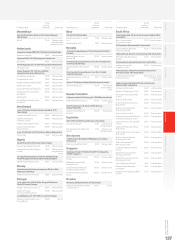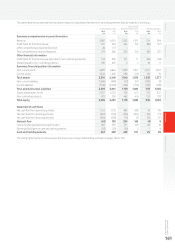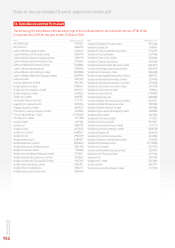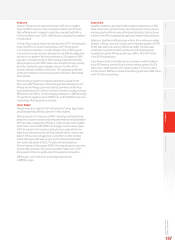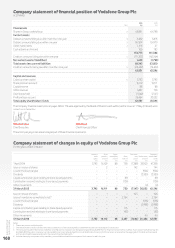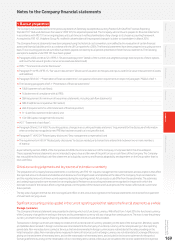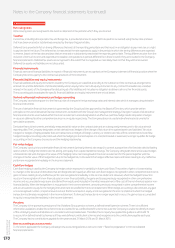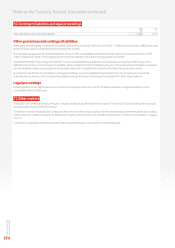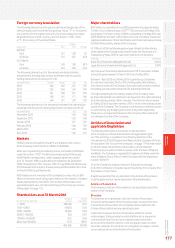Vodafone 2016 Annual Report Download - page 169
Download and view the complete annual report
Please find page 169 of the 2016 Vodafone annual report below. You can navigate through the pages in the report by either clicking on the pages listed below, or by using the keyword search tool below to find specific information within the annual report.
Overview Strategy review Performance Governance Financials Additional information
Vodafone Group Plc
Annual Report 2016
167
Vodacom
Vodacom Group service revenue declined 1.0%*, as the negative
impact of MTR cuts and a more competitive environment in South
Africa offset growth in Vodacom’s operations outside South Africa.
Q4 service revenue was -0.2%*, reecting some easing of competition
in South Africa.
In South Africa, organic service revenue declined -2.7%*. Excluding the
impact of MTR cuts, service revenue grew 1.4%*. Strong growth
in smartphone penetration and data adoption drove 23.4% growth
in local currency data revenue, although this was offset by aggressive
voice price competition. We have increased our 3G footprint to 96%
population coverage and 4G to 35% coverage as part of the Project
Spring programme, with 81% of sites now connected to high capacity
backhaul. During the year we began to trial our rst bre to the
business services, and bre to the home. The regulatory authorities
continue to review our proposed acquisition of Neotel, a bre-based
xed operator.
Service revenue growth in Vodacom’s operations outside South
Africa was 4.8%*, driven by customer base growth, data take-up and
M-Pesa, Active M-Pesa customers totalled 5.6 million, with M-Pesa
now representing 23% of service revenue in Tanzania. Vodacom Group
EBITDA fell 2.1%*, with a 1.1* percentage point decline in EBITDA margin.
The signicant negative impact of MTR cuts on the EBITDA margin was
substantially offset by good cost control.
Other AMAP
Service revenue increased 5.2%*, with growth in Turkey, Egypt, Qatar
and Ghana partially offset by a decline in New Zealand.
Service revenue in Turkey was up 9.9%*, reecting continued strong
growth in consumer contract and enterprise revenue, including higher
ARPU and data usage, partly offset by a 1.8 percentage point negative
impact from voice and SMS MTR cuts. In Egypt, service revenue grew
2.8%* as a result of an increase in data and voice usage and a more
stable economic environment. In New Zealand, service revenue was
down 3.1%* as a result of aggressive competition, but the contract
mobile base grew 4.6% year-on-year and the xed base beneted
from continued uptake of VDSL, TV and unlimited broadband.
Service revenue in Ghana grew 18.9%* driven by growth in customers,
voice bundles and data. Total revenue growth in Qatar was 13.2%*,
but slowed in H2 due to signicantly increased price competition.
EBITDA grew 7.0%* with a 0.3* percentage point decline
in EBITDA margin.
Associates
Vodafone Hutchison Australia (‘VHA’), in which Vodafone owns a 50%
stake, continued its good recovery, returning to local currency service
revenue growth in Q4 as a result of improving trends in both customer
numbers and ARPU, supported by signicant network enhancements.
Safaricom, Vodafone’s 40% associate which is the number one mobile
operator in Kenya, saw local currency service revenue growth of 12.9%
for the year, with local currency EBITDA up 16.8%. The total value
of deposits, customer transfers, withdrawals and other payments
handled through the M-Pesa system grew 26% to KES 4,181 billion
in the 2015 nancial year.
Indus Towers Limited, the Indian towers company in which Vodafone
has a 42% interest, achieved local currency revenue growth of 4.3%.
Indus owns 116,000 towers, with a tenancy ratio of 2.19x. Our shares
of Indus Towers’ EBITDA and adjusted operating prot were £285 million
and £19 million respectively.


